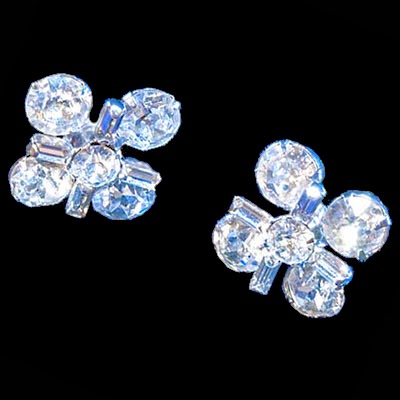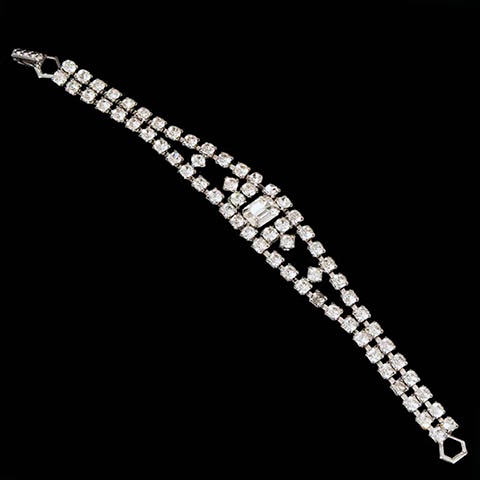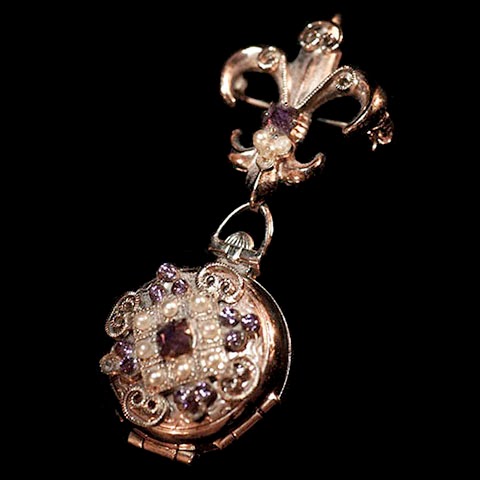 Antique and vintage rhinestone jewelry has become a very popular fashion accessory over the last few years. This current trend has increasingly been seen during fashion week runway events and in the personal attire of professional working women. It has also become a very wearable collectible that adds beauty and style to any ones appearance. Rhinestones are clear or colored glass that have been cut and polished to resemble or simulate diamonds, rubies, emeralds, and sapphires. The name rhinestones originated in Germany where crystals were found in the Rhine River. These natural crystals, once cut and polished were early substitutes for diamonds.
Antique and vintage rhinestone jewelry has become a very popular fashion accessory over the last few years. This current trend has increasingly been seen during fashion week runway events and in the personal attire of professional working women. It has also become a very wearable collectible that adds beauty and style to any ones appearance. Rhinestones are clear or colored glass that have been cut and polished to resemble or simulate diamonds, rubies, emeralds, and sapphires. The name rhinestones originated in Germany where crystals were found in the Rhine River. These natural crystals, once cut and polished were early substitutes for diamonds. |
 |
 |
It wasn't long before the good quality natural
quartz crystals became scarce and jewelers began to grind glass into a glass paste that could be molded
and then heated. The outcome of this
process was a dense glass with an opaque surface that didn't reflect the light
very well. These stones became known as
paste and were often wrapped on the
underside with silver or copper foil to enhance the light reflection.
 |
 |
 |
In the late 1800's, a new glass cutting technique
and machine was developed by Daniel Swarovski that allowed the glass or stone
to be cut with many facets. Facets
reflect the light and make the stones sparkle. The use of higher lead content and other chemicals in the glass batch also improved the glass
clarity and its ability to refract light.This was the beginning of modern day rhinestones.
Today vintage rhinestone jewelry is valued not only for
its sparkle but for its quality of workmanship and its beautiful designs. Rhinestone jewelry always makes the perfect gift for that special someone. Or why not start your own personal collection today?
























































